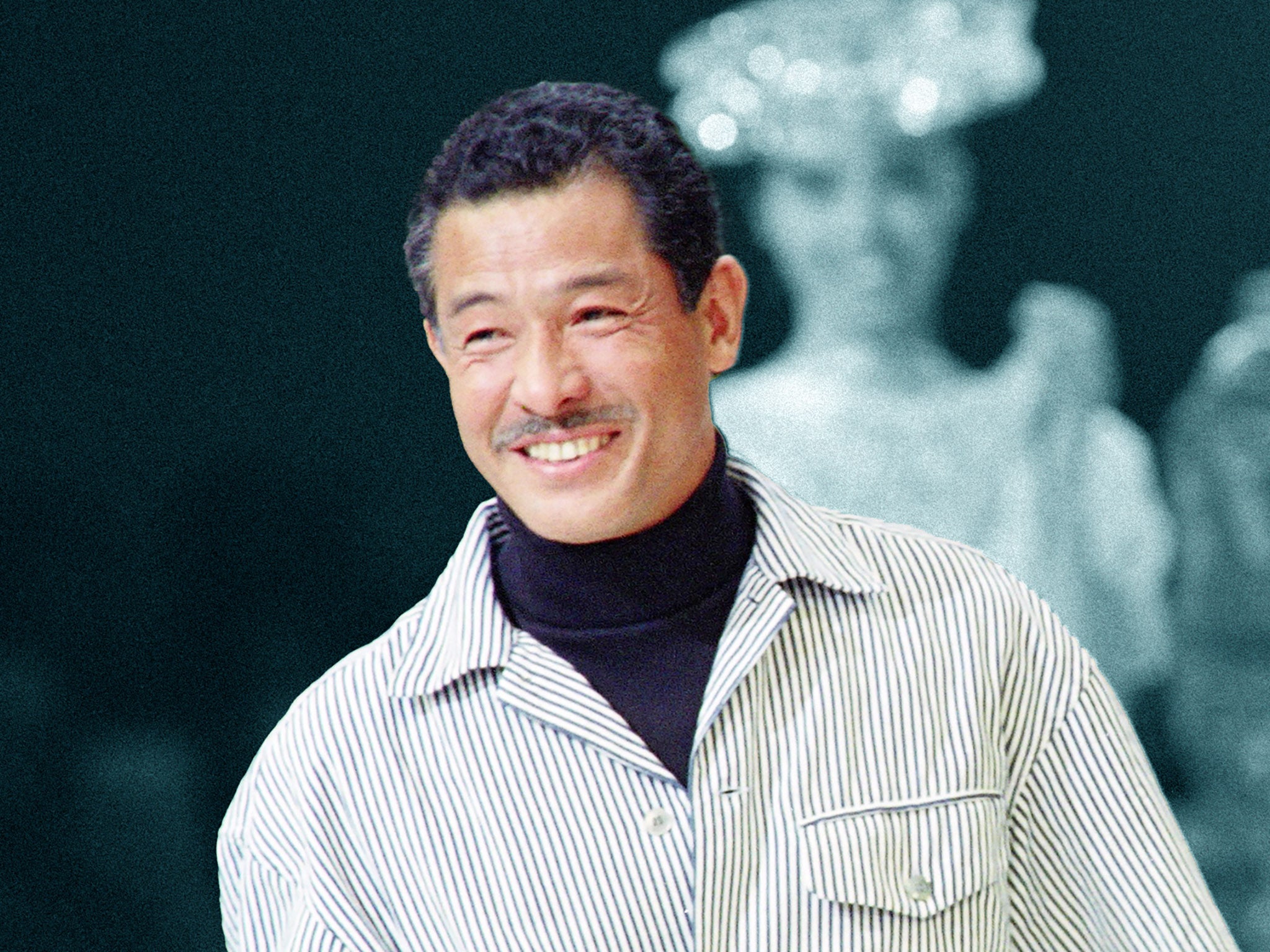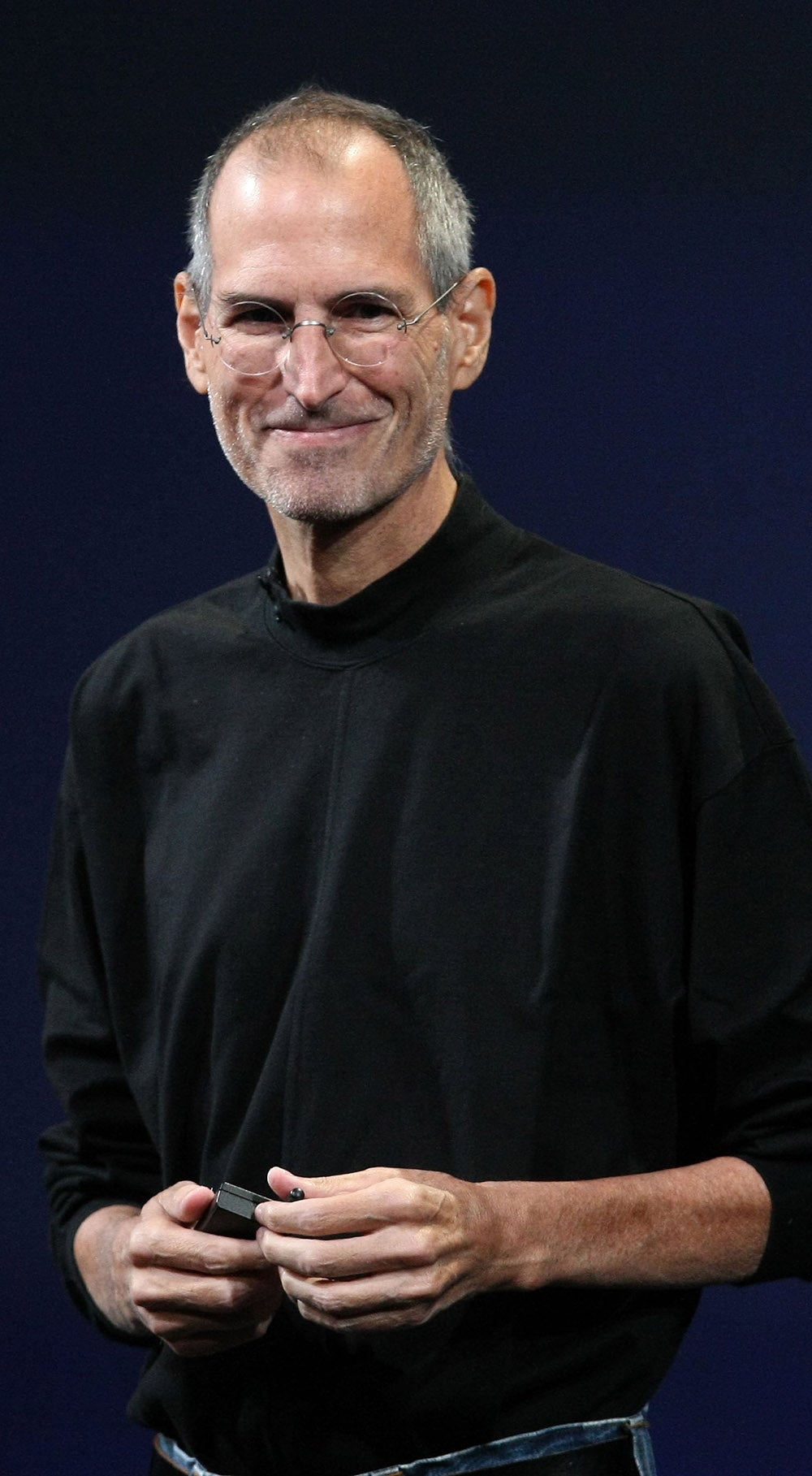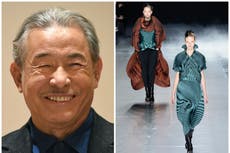Issey Miyake’s greatest legacy will always be his turtlenecks
In the 1990s, the humble black turtleneck saw a fashion revival in an unlikely place: on Apple founder Steve Jobs. Laura Hampson charts the history of the item and how late designer Issey Miyake changed the way we wore the turtleneck forever


Steve Jobs was never meant to be a fashion icon. Yet, when the late Apple founder returned from Japan in the 1980s with a wardrobe full of black turtlenecks, he inadvertently became one. The designer of these turtlenecks? Issey Miyake.
Miyake’s death at the age of 84 was announced by his fashion house today (9 August), with a statement confirming that he’d died from liver cancer surrounded by his family. While Miyake will not have a memorial as per his wishes, he will be remembered for his innovative pleat designs and, of course, his turtlenecks.
Before his own death in 2011, Jobs told his biographer Walter Isaacson that he had initially planned for Miyake to design a uniform for everyone at Apple to wear. But, when his staff weren’t too keen on the idea – “Everybody hated it,” Jobs said – he went back to Miyake to create a signature outfit that Jobs himself could wear each day.
“I asked Issey to make me some of his black turtlenecks that I liked, and he made me 100 of them,” Jobs explained. “I have enough to last for the rest of my life.”
The Miyake-designed black turtleneck later fell into the hands of yet another tech innovator: Elizabeth Holmes. It would eventually be revealed that the disgraced founder of Theranos was introduced to Miyake’s black turtleneck by a former staffer. “She was very curious about Steve’s attire, and I explained to her that he was inspired by Sony’s heritage of having Issey Miyake create a lot of the [Sony] line manager apparel,” former Theranos chief design architect Ana Arriola told podcast The Dropout. “I think she went off and tracked down who Issey Miyake was, and the rest is couture history.”
While the turtleneck may have been favoured in the tech world, it’s long been a constant in fashion spheres, too. It’s no surprise, though, that the black turtleneck has stood the test of time – it was popular even before Miyake came onto the scene. Marilyn Monroe was pictured wearing one in 1953, and Audrey Hepburn was a known fan. The history of the turtleneck actually dates back as far as the 1500s, where knights would wear them to prevent chafing from chainmail worn around their necks.
The turtleneck turned regal in the 1600s, with the likes of Queen Elizabeth I and other nobility wearing high-necked garments. But it wasn’t until the 1800s that the turtleneck as we know it today was popularised. In 1860, English polo players began to wear turtlenecks as part of their uniform. Fast-forward a century, and the humble turtleneck became a symbol of 1970s feminism, with Gloria Steinem favouring the high-necked shirt to show that “women too could wear clothing with utility at its core”.

Miyake’s turtleneck legacy will be that he brought the garment into everyday use. “The garments he designed were modern, practical, and timeless,” Anita Low, founder of online vintage store Clara’s Box tells The Independent. “The black turtleneck perfectly marries the formality of workwear with casual and comfortable everyday attire.”
Low explains that it was Miyake that brought the turtleneck to the forefront of the fashion world. “It continues to be a popular piece to this day because black turtlenecks are practical, easily paired with anything, can be worn during the day through to the night, [are] low maintenance and not restricted by the season,” she adds.

Since Miyake’s resurrection of the turtleneck as a fashion statement, it has become a staple in the fashion set’s repertoire. A black turtleneck can make even the simplest outfit instantly chic, and it’s an item that continues to dominate runways. Bella Hadid walked the Proenza Schouler runway at New York Fashion Week in a black turtleneck earlier this year, and Balenciaga brand ambassador Kim Kardashian is often seen in the fashion house’s form-fitting, high-necked designs.
While Miyake discontinued the turtleneck sported by Jobs in 2011 – following the Apple founder’s death – the brand released a $270 (£223) turtleneck in 2017 called the Semi-Dull T. It was almost an exact replica of the original. The new turtleneck had higher shoulders and a slimmer silhouette than the original, but fans didn’t mind. The most recent iteration, a plissé high-neck T-shirt, retails for £227 – but it is nearly sold out. Such is the power, and lasting legacy, of Miyake’s turtlenecks.
Join our commenting forum
Join thought-provoking conversations, follow other Independent readers and see their replies
Comments


Bookmark popover
Removed from bookmarks